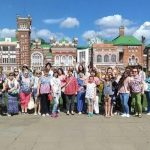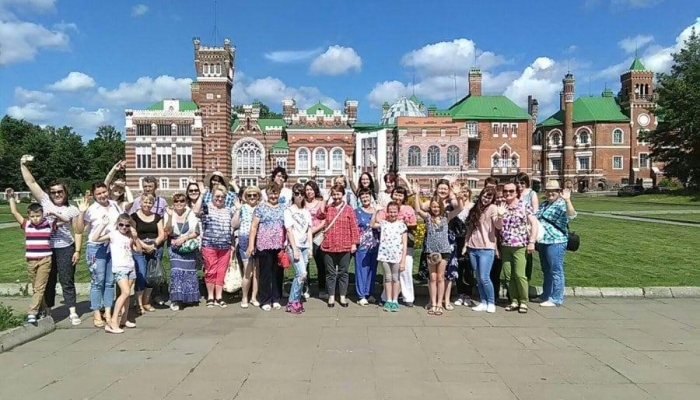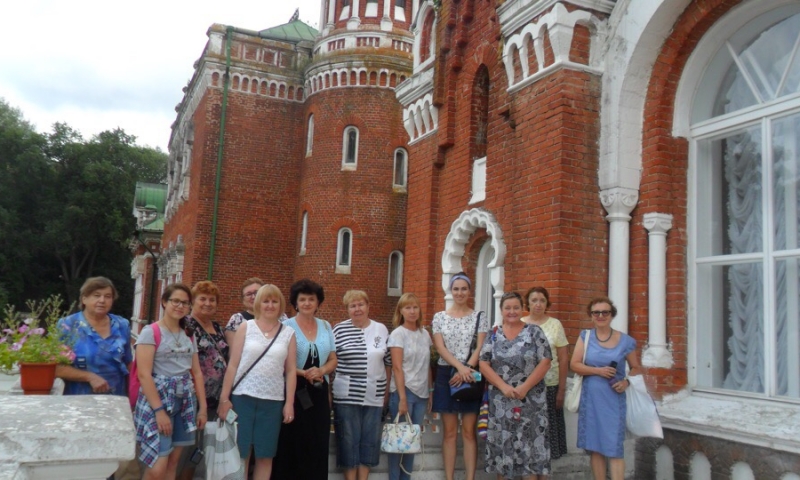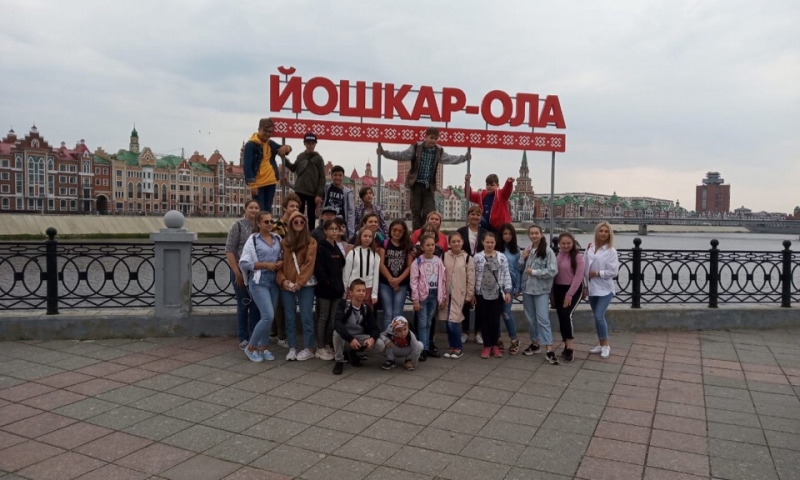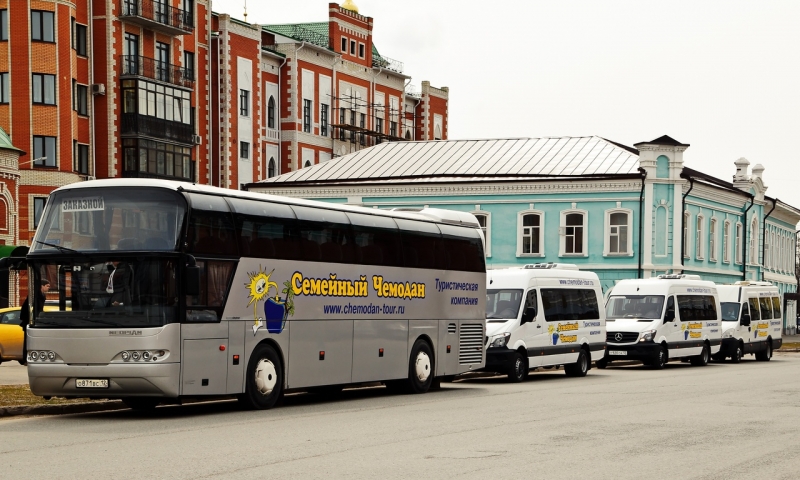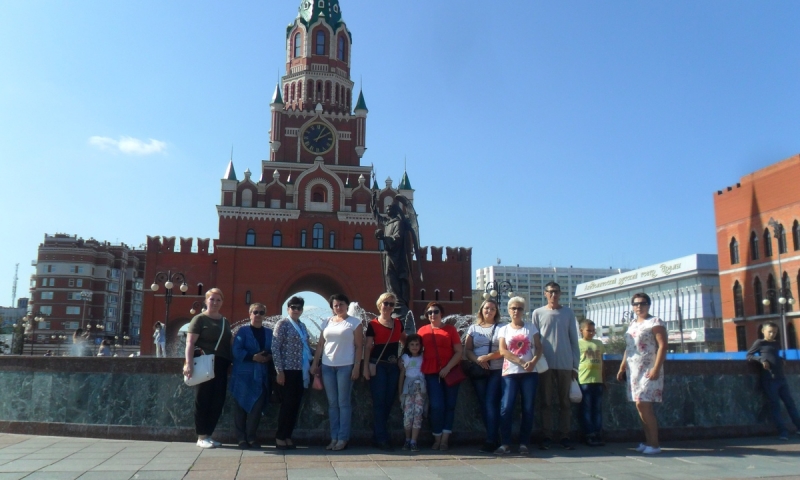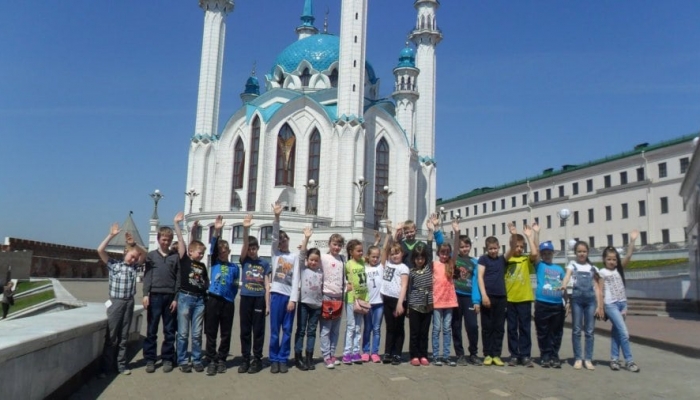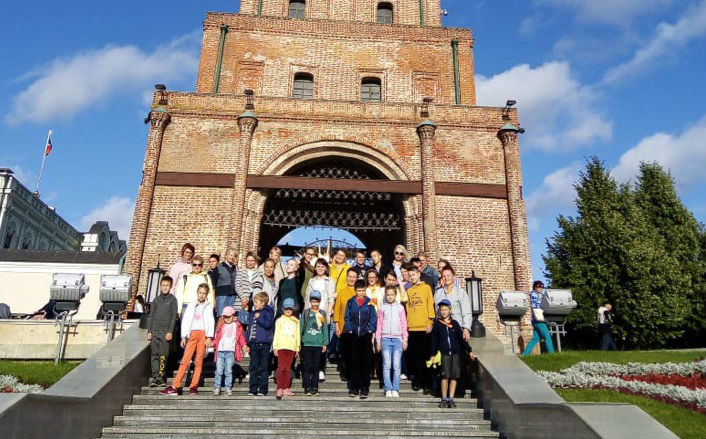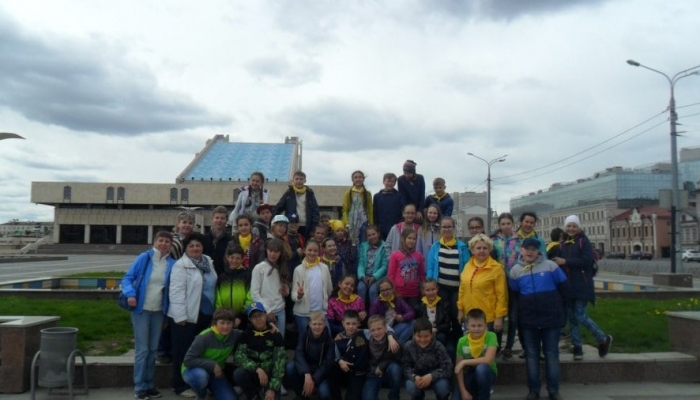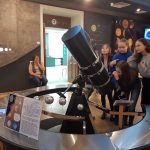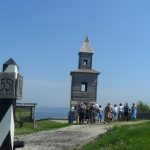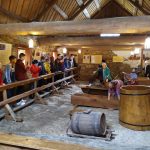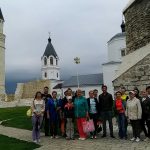- Old-Tatar Sloboda, one of the famous sights of the city. It was built by Ivan the Terrible after the siege of Kazan in 1552. The first people living here were tatars who took part in the siege.
- Lake Kaban where the chest with innumerous treasures is situated. The legend says that the chest was hidden on the bottom of the lake during the siege of Kazan.
- The central streets of the city of Kazan that were visited by Pushkin, Gorky, Tolstoy and other outstanding people of culture and art.
- The Exaltation of the Cross Church with the Kazan Icon of the Mother of God, one of the most revered shrines in Russia. In 2004 Vatican returned the Kazan Icon to Patriarch Alexy II and since that time thousands of pilgrims and tourists come here to touch the miraculous icon.
- National complex “Tugan Avylym” that means “Native Village” in the Tatar language. Here you can find a restaurant with the traditional tatar cuisine, a pancake café with the Russian stove and guest houses decorated in the Tatar style, you can attend different master-classes and interactive programs.
- The Kazan Kremlin is the chief sight of the Republic of Tatarstan, now it is the object of the UNESCO heritage. The whole territory of the Kremlin is the museum-reserve where a lot of museums, Kul Sharif Mosque, Suyumbike Tower and other historical places are found.
- Sheremetev Castle, a real masterpiece of the architects of that time, who did their best to realize the ideas of the owner. There are about one hundred rooms in the castle; each of them is unique in interior decorations. Here you can admire beautiful rooms decorated with magnificent Arabic ornaments. In some halls visitors find nice fireplaces decorated with tracery bars.
- The museum of personal things of the Sheremetev Family, this place is of great interest among the tourists. Here you can see the old photos of the family, their furniture, statues and household items of the estate owners.
- Park of Sheremetev castle, this place attracts by its service buildings and landscape parks with ponds, designed according to all the rules of those times. Here you see birch trees and pine-trees and a lot of beautiful flowers that are different in color, shape and flowering time. The footpaths go along the evergreen lawns; everything is well kept all the year round.
- The tomb of Peter Sheremetev, the last owner of the castle, who lived here not more than a year after the construction was over. The father and the son were buried near the Archangel Michael Church.
- Archangel Michael Church, one of the most beautiful churches in the Republic of Mari El. It was built instead of the old wooden building from 1869 till 1989 on the Makovka hill on the money of usual people. Quite a big some was donated by the Sheremetev family.
- Obolensky-Nogotkov Square, an example of the Venetian style in the architecture. The main attraction for the tourists here is a famous big clock with the donkey carrying the icon every hour, when the clock strikes. You can also see here the monument to Ivan Obolensky-Nogotkov, the first governor of the city and a copy of the Tsar-Cannon. National Art Gallery, that is the main exhibition hall of Yoshkar-Ola, is also situated here.
- The sculptures of the Yoshkar-Ola Cat, the symbol of the city. The guests of the Mari capital traditionally take pictures near the sculpture and rub the nose of the bronze statue – for luck. The bronze cat weighs 150 kg.
- Amsterdam Embankment goes from Pushkin Street to Gogol Street along the bank of the Kokshaga River. Here you can see the sculpture of Alexander Pushkin talking with his famous character Eugene Onegin. Not far from them you can see the monuments to Russian playwright Nikolai Gogol and to the Dutch artist Rembrandt van Rijn. All in all the architecture of this part of the city is very similar to the architecture of Amsterdam, all the buildings are designed in the Dutch style.
- Patriarch’s Square, situated in the very centre of the city of Yoshkar-Ola on the bank of the Malaya Kokshaga River. It appeared in 2010. The main attraction of the square is a statue of Patriarch Alexey II made of granite. In one hand of the patriarch there is a stick, the other one is raised up to the sky with a pigeon.
- The composition of 12 apostles, a very interesting attraction. Every 3 hours from 9 am till 9 pm when the clock strikes you hear the church songs and the bells ringing and on the balcony you can see the figure of Jesus Christ riding a donkey and the figures of his disciples – 12 apostles following him.
- Fountain of Peter and Fevronia is placed in Patriarch’s Square. The legend says that Knyaz Peter governed in Murom in the 13th century, and he married a poor peasant girl Fevronia, who cured him of a terrible disease. The rich and noble people of Murom were against this misalliance and they tried to destroy it. But Peter refused his title and position and stayed with his wife. Together Peter and Fevronia spent a few years in exile but later they returned to the city of Murom and governed there for many years. Peter and Fevronia died in one day and one hour on July 8th, 1228. It’s a miracle but after the death their bodies were found in one coffin. So they were buried together.
- Tsarevokokshaiskiy Kremlin was built in 2009 in the place of medieval defensive buildings, their remains were found during excavations. It is a closed complex of four red brick towers, joint by the walls and forming a rectangle. This is the place for city holidays, fairs, and agricultural exhibitions.
- The National Museum named after Evseev. The unique ethnographic expositions tell you about the traditions of the life of Mari people from birth to death, you will learn about calendar ceremonies, traditional Mari works (beekeeping, hunting, fishing, agriculture, crafts), their religions, house-building ceremonies. Their traditional culture is represented by the example of the life of a Mari woman that we see in different life situations – in the family, in society, at work and leisure. The expositions contain real household things, decorations, national costumes, and religious objects of the 19th-20th centuries.
- The museum of valenki. Here you can see a great variety of models of these boots. The excursions for children and adults are held here, where you can find out about the history of valenki and to see how they are made by hand.
- The museum of cheese. It is a very interesting place, where you will find out about the history of the cheese products, you will try different kinds of cheese, you will learn some recipes etc. The dairy products that are produced in the Mari Region and that you can see in the museum of cheese are of excellent quality and ecologically pure. You will surely like milk, kefir, ryazhenka, yogurt, sour cream and cheese that are very good for health.
Day 1
Day 2
Day 3


